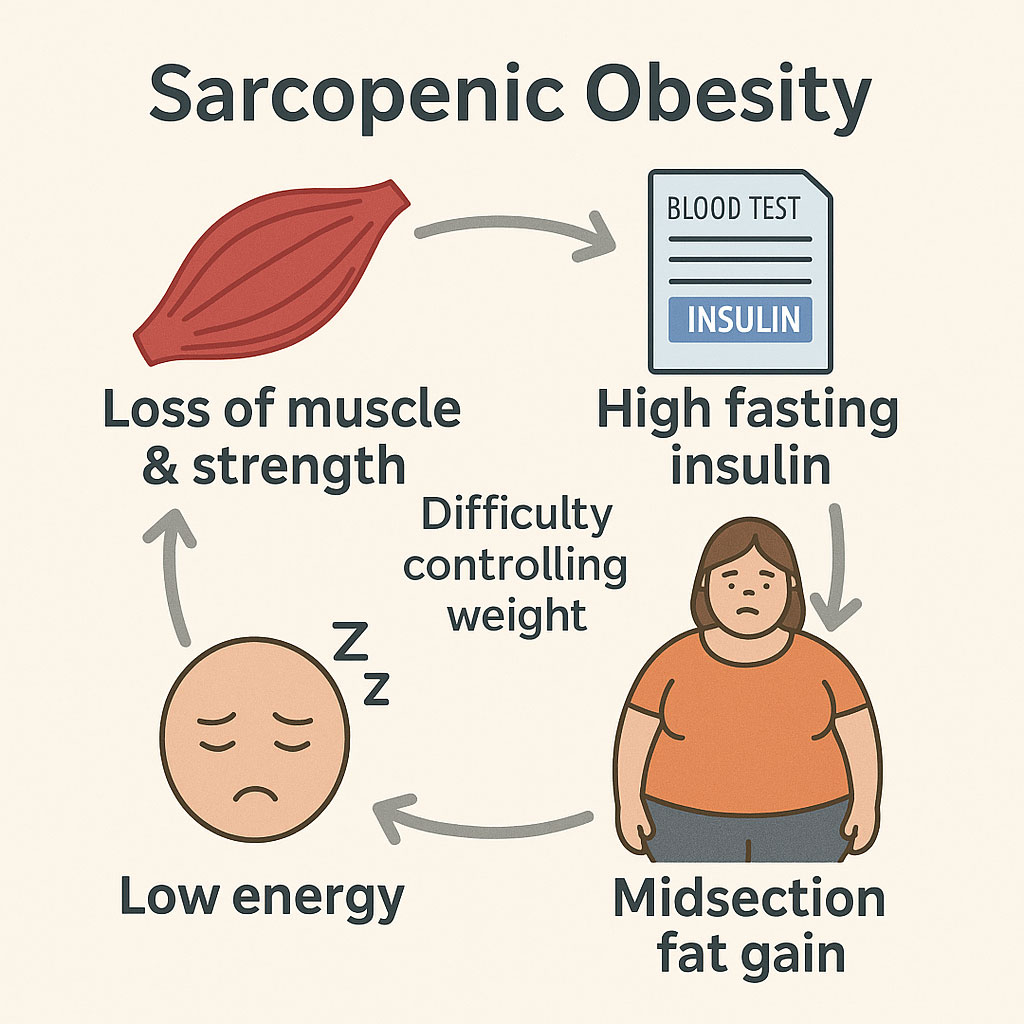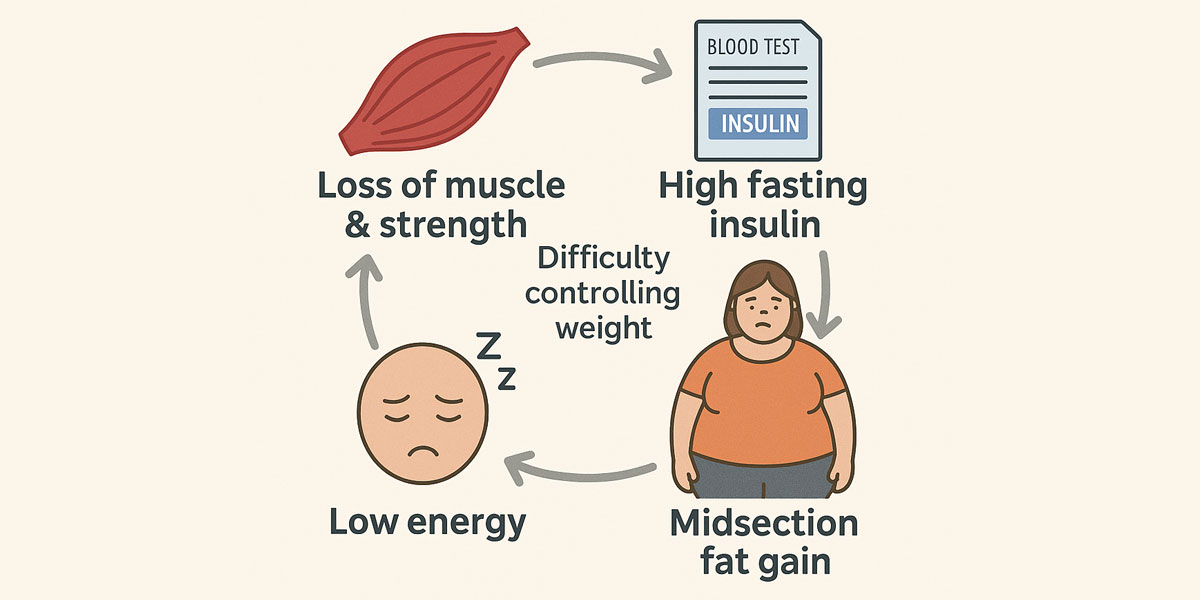Why muscle loss (sarcopenia) makes weight loss harder — and how to rebuild your metabolism after 40.
If you’re eating less but not losing weight – this could be one of the reasons.
- After 40, our bodies suffer accelerated muscle loss each year unless we have enough physical activity and protein intake to maintain it.
- Less muscle = slower metabolism = higher insulin levels = more belly fat.
- It’s not about “willpower.” It’s about biology, and the good news is it’s fixable.

If you’re carrying extra weight around the midsection, you may also have high levels of fasting insulin that are not measured in standard blood tests. Even if it was measured, there’s no drugs that can correct it. The only solution is a combination of adopting the right eating plan for your body and a resistance-based exercise plan.
Why Muscle Matters for Women… and Men
- Your muscles are your body’s main engine for burning fat and stabilising energy.
- Healthy muscles help control blood sugar and insulin, lowering cravings and fatigue.
- Stronger muscles mean stronger bones, better posture and stability.
- Strong muscles delay the onset of frailty.
How to Rebuild Your Metabolism
Step 1: Prioritise Protein
- Aim for at least 90g (females) or 120g (males) daily.
- Start with at least 20-30g of protein at breakfast — it sets your metabolism up for the day.
- Consume either meats, fish, eggs or dairy in every meal.
- Using protein shakes as between meal snacks makes it easier to hit your protein target.
The Healthy Inspirations program helps you hit your daily protein target.
Step 2: Control Carbs for Insulin Balance
- Your coach will guide you through the ICT Program to discover and eat within your body’s Individual Carbohydrate Tolerance. This will help your body normalise insulin levels.
- Normalising insulin helps your body access stored, trapped fat for energy, making weight loss easier.
- You’ll enjoy steady energy levels – no more sugar crashes or cravings.
- As long as you proactively pre-plan your meals and manage your food environment you’ll be less reliant on willpower.
Step 3: Build Strength, Not Exhaustion
- Just two to three short resistance sessions a week (at home or gym) protect and rebuild muscle.
- Focus on progress, not perfection. Resistance bands, body weight, and weight training are good options.
- Combining movement with the right nutrition, weight loss and ongoing maintenance becomes sustainable.
- If you’re not ready to start resistance training, focus your efforts on your eating plan first.
What Body Type are you currently?
| Body Composition Type | Muscle Mass | Fat Mass | Metabolic Effect |
|---|---|---|---|
| Healthy | Normal | Normal | Balanced metabolism |
| Obese | Normal or High | High | Insulin resistant, but can improve with fat loss |
| Sarcopenic | Low | Normal | Low metabolic rate, frailty risk |
| Sarcopenic Obese | Low | High | Severe insulin resistance, fatigue, poor function |
Your goal is to move towards Healthy — strong, energised, and metabolically balanced.
Remember: You’re not just losing weight — you’re rebuilding the engine that burns fat. Protect your muscles, balance your insulin, and your metabolism will work for you again.
Healthy Inspirations – Guided coaching for lasting weight loss, strength, & vitality.

